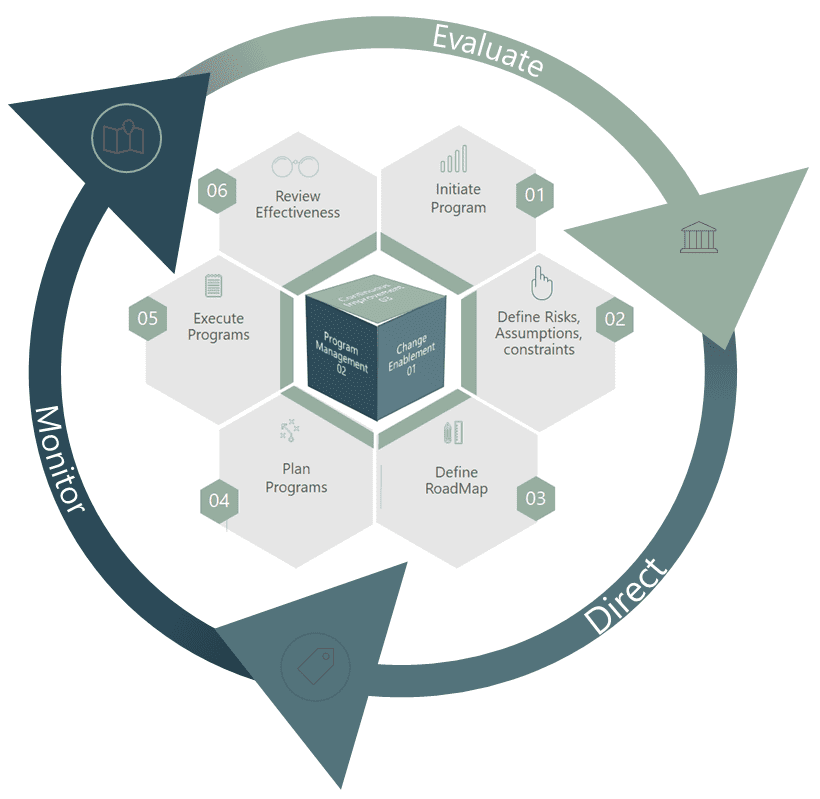
Click to learn more about author Tejasvi Addagada.
Organizations implement a change to create value and benefits for stakeholders or shareholders. Often, value creation is nothing but enjoying the benefits at an ideal resource cost while optimizing risk. A simple retail banking operation, for instance, cannot generate extended value from its assets, in-case it is not able to manage the risk associated with a customer paying back without defaulting.
At the same time, if it does not lend to more customers or accept quality deposits, the revenue reduces. This might mean getting in place the capability to accept and service an increased customer base. Often, driven by increased capabilities of marketing, sales, origination & servicing. Capability increments, or new capabilities are a common sight to drive this change. We won’t go deeper into what kind of capabilities are required in this instance but to set the context herewith.
Benefits management is guaranteed once an organization delineates change management from change governance. Management refers to planning, building, and running such capabilities; governance relates to monitoring, evaluating, and directing enablers to ensure that the business realizes 100% of benefits from the deployed capabilities.
Let’s put this in the perspective of data – in Chief Data Offices, we embrace program governance, a variant of change governance. This is to assess and direct – data related changes in the line of vision guided by data policy. For this article, I am considering data as an enterprise asset that needs to be actively managed like technology or process changes. Another relationship we should not ignore is that when the Data Governance office is commissioned, the Project Management Office (PMO) is established within the data office or is extended and integrated with the enterprise PMO.
Value creation is successful when all aspects of benefits realization, risk optimization, resource optimization are addressed at specific phases in a project or any change. Most firms refer to these placeholders, across a program timeline, as toll gates. These place holders make sure that accountable stakeholders, for the phase of a program, critically decide on various options to reach an outcome. Accountable stakeholders exchange perspectives while the ones to whom responsibility is cascaded present their thoughts and finally the program is directed to the next feasible state.
For instance, one often finds duplication of benefits as a common aspect to bring up during the first toll gate of many changes. On finding a program to have duplication of benefits, direct some programs to merge their basic capabilities as additional capabilities of another program with similar benefits. The next evaluation of the program happens after the relationships between the merged requirements are published.

Let us look at differences between program governance in the context of information technology and Data Management.
“Data Governance is an oversight on data management activities to make sure that policy and ownership of data is enforced in an organization. The emphasis is on formalizing data management function along with associated data ownership roles and responsibilities. In addition, Data Governance also ensures that data management is fund-able and sustainable as a function.”
For instance, in a governance council, I have seen a transformation program, present a design, to use a data pipeline and not an Enterprise Service Bus (ESB). Though the latter is yet to be available as an outcome from another program. The reason stated in the architecture committee, is that the leveraging ESB will need the current program to wait for a month to carry out its requirements. As members of the council, we checked the risks, dependencies, options and compliance aspects to understand the best approach to address this decision.
Program governance in context of Data Governance ensures that data policy is enforced to optimize benefits and risks. Programs are monitored and directed to put in data capabilities with the right controls that include Data Quality, metadata, architecture and life-cycle management to balance risk and value.”
Program governance in the context of an enterprise benefits management guarantees that stakeholder needs, assumptions, constraints, risks as well as options are evaluated to decide balanced, agreed upon enterprise goals are achieved. Direction to the program is provided through prioritization, decision making and monitoring performance.
Some questions that go into evaluation of the change are as below
- Does the project align with current business needs?
- Does the project offer value to the business?
- Is the output clearly defined in terms of timing, cost and business requirements?
- Can the project be monitored and measured in a transparent way?
- Are any risks clearly defined and managed?
- Is the project compliant with any regulatory requirements?
- Are we on track to plan and schedule capabilities
- What decisions are to be made now?
- What issues are there
- Are we on track based on budget and assessment plan
- Have the objectives of project changes
- Has the scope changes
- Is the change management working well
- Is this program right to be invited to the architecture committee
- How much scope have we successfully completed?
- How is the team progressing toward the goal over time?
- How are we doing with cost?
- How is this team progressing compared to other teams?
- Which teams should i help to get back on track?
